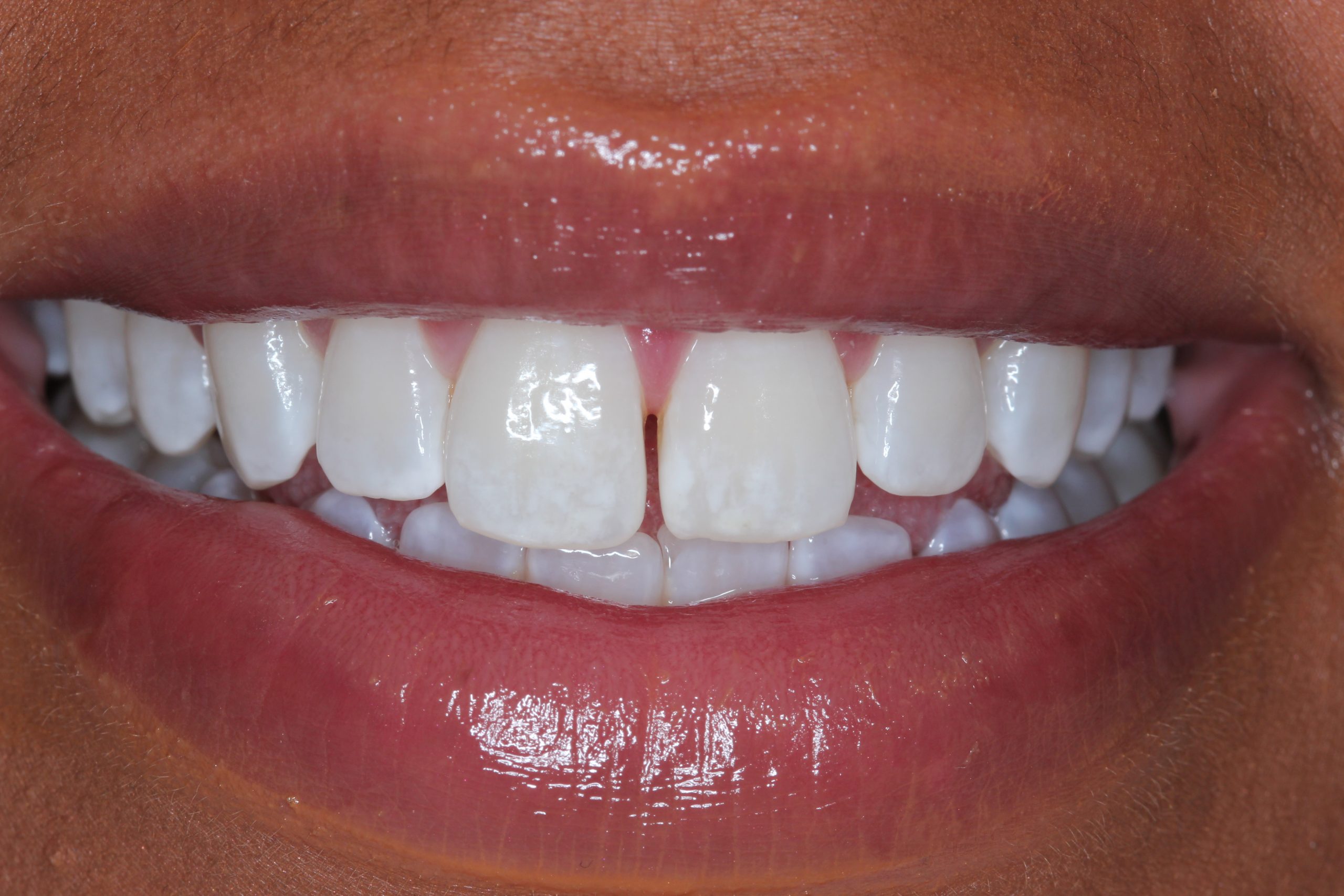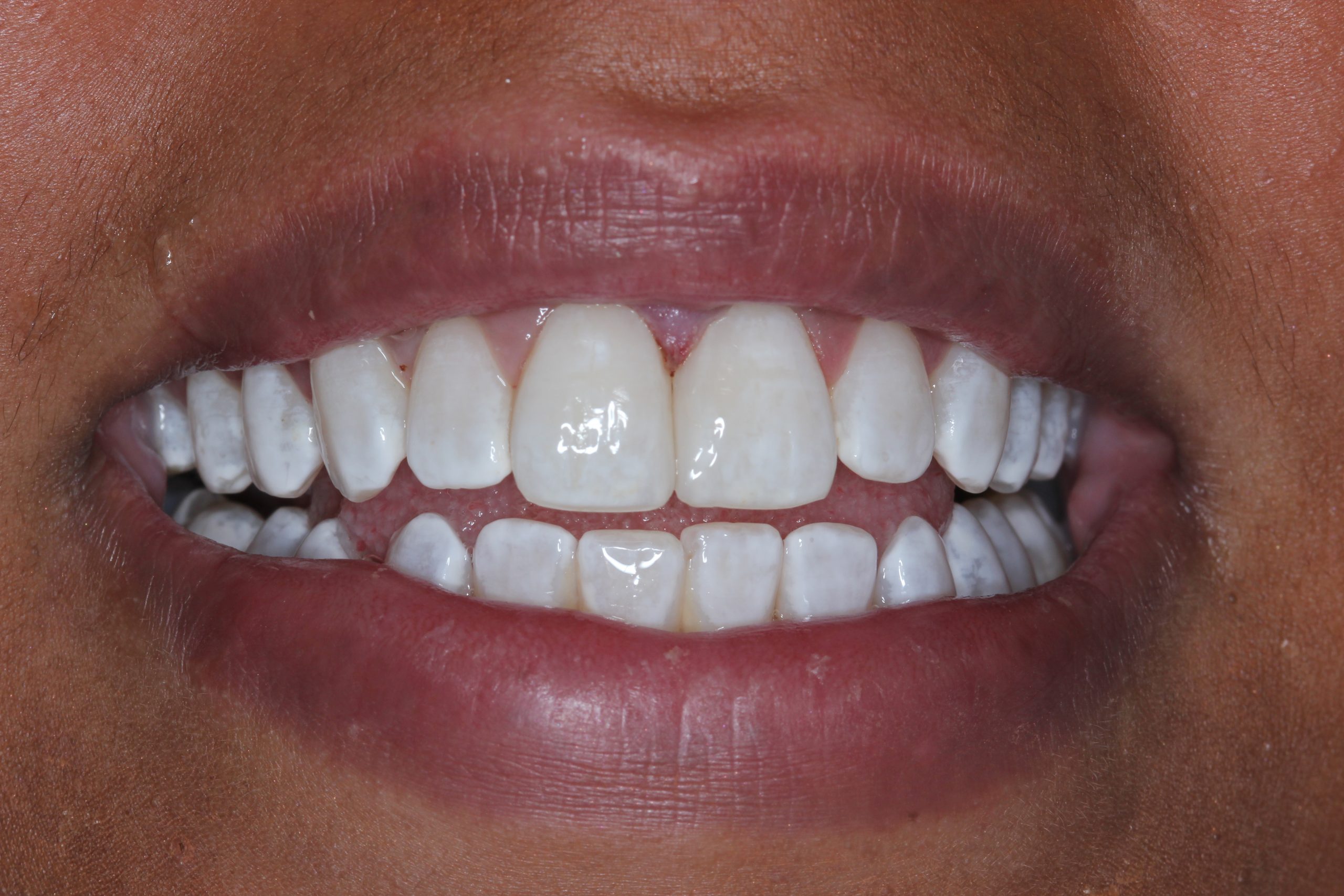
When Should You Start Taking Your Child to the Dentist?
October 7, 2021
Healthy Holiday Treats Ideas That Are Good For Your Teeth
October 7, 2021Diastema refers to a gap or space between the teeth. This gap is caused because of an unequal relationship between the jaw and the size of patients teeth. These spaces can form anywhere in the mouth, but are most common between the upper two front teeth. This condition affects both adults and children. In fact, this condition is more common in children, but gaps may disappear once their permanent teeth grow in. In adults however, diastema will not resolve itself on its own.
Some gaps are small and barely noticeable, whereas other gaps are larger and create a cosmetic issue for many patients. If you don’t like the way the gap looks aesthetically, there are ways to reduce the size of your tooth gap or even close it all together.
This patient came to Southview Dentistry and wanted to close these space between her two front teeth. The patient was very clear that she did not want to lose the gap by using braces. Thanks to Dr. Micheal Wilson’s training in diastema closures, stunning cosmetic skills and our in-house lab, we were able to close the gap in just one visit.


Causes of a diastema
There isn’t one single cause of diastema, but rather several possible contributing factors. In some people, this condition is related to the size of their teeth and the size of their jaw bone. Gaps may form when a person’s teeth are too small for their jaw bone. As a result, teeth are pushed apart, creating a gap. The size of your teeth and jaw bone can be determined by genetic factors, so it is common to see diastemas across multiple family members.
You may also develop diastemas if there’s an overgrowth of the tissue that borders your gum line and your upper two front teeth. This overgrowth causes a separation between these teeth, resulting in a gap. Certain bad habits may also trigger a gap between the teeth. Children who suck their thumb may form a gap because the sucking motion puts pressure on the front teeth, causing them to push forward.
In older children and adults, diastemas can develop from incorrect swallowing reflexes. Rather than the tongue positioning itself at the roof of the mouth while swallowing, the tongue may push against the front teeth. Dentists refer to this as a tongue thrust. This may seem like a harmless reflex, but too much pressure on the front teeth can cause a separation.
Diastemas can also develop from gum disease, which is a type of infection. In this case, inflammation damages the gums and tissue supporting the teeth. This can lead to tooth loss and gaps between teeth. Signs of gum disease include red and swollen gums, bone loss, loose teeth and bleeding of the gums.
Treatment of a diastema
Treatment for a diastema may or may not be necessary depending on the underlying cause. For some people, a diastema is nothing more than a cosmetic issue and it doesn’t indicate a problem like gum disease.
Braces are a common treatment for diastema. Braces have wires and brackets that put pressure on teeth and slowly move them together, which closes a gap. Invisible or removable braces may also fix some cases of diastema.
If you don’t want braces, talk to your dentist about cosmetic procedures to fill gaps between your teeth. Veneers or bonding are other options you and you dentist may decide are right for you. This procedure uses a tooth-colored composite which can either fill gaps or fit over teeth to improve the appearance of your smile. This procedure is also useful for fixing a cracked or chipped tooth. You may also be a candidate for a dental bridge, which can replace a missing tooth or correct a gap. If the gums above your two upper front teeth overextend and cause a gap, surgery to remove excess tissue can correct the gap. However, you may need braces to fully close large gaps.
If your doctor diagnoses you with gum disease, you must receive treatment to stop the infection before you seek treatment to close the gap. Treatment for gum disease varies, but may include scaling and root planing to remove hardened plaque (tartar) from above and below the gums. This eliminates the bacteria causing the disease, which will then clear up the infection. Thus, making it possible for you to move forward with you diastema correction. It is important to keep in mind, that severe gum disease may require surgery to remove tartar that has accumulated deep within the gums. Surgery can also involve bone and tissue regeneration.
Outlook and prevention of diastemas
For those who seek treatment for a diastema, the outlook is positive. Many procedures can successfully close a gap. Additionally, treatments for gum disease can restore bone health and stop inflammation.
Some diastemas aren’t preventable. But there are ways to reduce the risk of developing a gap. This includes helping your children break a thumb-sucking habit, learning proper swallowing reflexes and practicing good oral hygiene. Make sure you brush and floss on a regular basis, and see a dentist twice a year for regular cleanings and dental examinations.
The Southview Dentistry Difference
Here at Southview Dentistry, Dr.’s Wilson pride themselves on their continued education and their commitment to always being able to provide their Charlotte patients with the most up to date dental treatment options. If you are feeling like learning more about what is diastema, or decide that it is time to close a gap in your teeth or have cosmetic dental work done, look no further than Southview Dentistry. Book your appointment online or give us a call today!




